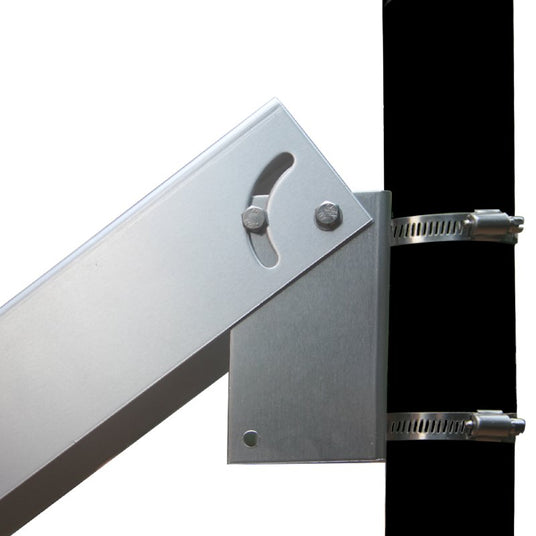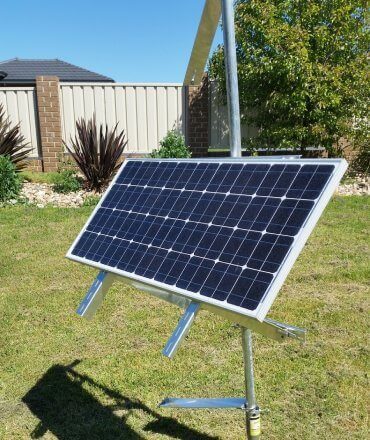Capture progress, marketing reels, and site evidence without babysitting batteries or trenching AC. LinkSolar designs compact, predictable solar for IP/PoE cameras, mirrorless interval rigs, LTE routers, and slim enclosures—so your footage doesn’t die on the winter week you need it most.
Who This Is For
- Construction and civil sites where AC runs are impractical or temporary.
- Marketing and engineering teams running weeks-to-months time-lapse with strict cadence.
- Cameras on poles with partial canopy or shifting shade across the day.
- Projects that want fewer truck-rolls via predictable winter harvest and service-friendly hardware.

Sizing That Won’t Ruin Your Footage
- Budget energy/day, not just watts. Include camera (sensor + encoder), LTE/Wi-Fi, heaters/fans, and IR duty at night.
- Design to the worst month. Divide Wh/day by worst-month sun-hours for panel watts.
- Add losses (20–30%). Controllers, wiring, buck/boost, and temperature derates.
- Pick autonomy by risk. 2 days for mild climates; 3–5+ days where storms or site access are uncertain.
- PoE realism. Injectors/switches add overhead; direct DC to the camera/router is more efficient if supported.
Example (IP camera + LTE router, modest IR):
Camera 7 W × 24 h = 168 Wh; Router 2 W × 24 h = 48 Wh → 216 Wh/day.
Losses 25% → ~270 Wh/day. Worst month 3.0 sun-hours → ~90 W panel (round up to 100 W).
Autonomy 3 days → ~810 Wh battery (≈ 65–70 Ah usable @ 12 V).

Placement & Mounting That Beat Adding More Watts
- Height beats size. Mount above booms, fences, and vehicles to escape moving shade.
- Aim for winter. 30–45° tilt improves short-day harvest and sheds rain/snow.
- Keep runs short. DC feeds are tidier and more efficient when the enclosure is chest-height.
- Service without ladders. Leave slack, labels, and a clear front-panel disconnect for fast swap-outs.
Power Architectures That Actually Work
- Direct-DC camera systems (preferred). Panel → Controller → 12 V battery → camera/router via buck to load voltage. Add low-voltage disconnect (LVD) to avoid corrupt files and boot loops.
- PoE camera systems. Budget injector/switch overhead; keep the PoE run short; choose MPPT when panel Vmp is well above battery voltage or when using series strings.
- Thermal management. Space for passive airflow; avoid sun-exposed black enclosures when possible; derate for summer roof/pavement heat.
Build Your Time-lapse Solar Kit
Work We’ve Delivered — Remote Video & Time-Lapse
| Customer / Use Case | Solution (key components) | Panel & Construction | Outcome |
|---|---|---|---|
High-rise Progress Time-lapse | Pole-top array at 35°; chest-height enclosure; direct-DC to IP cam to avoid PoE waste; seasonal re-aim for winter. | Framed 80–120 W; stainless clamps | Smooth daily cadence through winter; no mid-project outages |
Bridge Rehab Marketing Rig | Tripod with raised module above crane sweep; separate rails for camera vs. router; torque-marked fasteners. Pole Mount Kit (5–50 W) | 50–80 W array; air-gap for cooling | Clean 4K frames; fewer site visits; stable uploads |
Quarry Edge Safety Monitor | Conduit down pole; drip loop; color-coded harness; LVD to protect storage on storm weeks; quick-swap harnesses. Solar Panel Brackets | 60–100 W array; quick-release clamps | No brownouts; controller logs show orderly recovery after fog |
Event Grounds Timelapse (3 mo.) | Lightweight mount with sheltered tilt; IR restricted to night; injector removed to save headroom. 100 mm Z-Bracket Kit | Small framed array; buck converters | Lower idle draw; improved nighttime runtime |
Mobile Site Camera Cart | Compact array on wheeled cart; enclosure heat-managed; direct-DC camera; gland with strain-relief; labeled disconnect. Portable Solar Panels | 40–80 W portable; reinforced harness | Quick redeploys between pads; predictable daily harvest |
* Harvest varies with season, shading, temperature, and duty cycle. For exact sizing, send device datasheets and duty profile.
Frequently Asked Questions
Real issues that break time-lapse
Our footage keeps dropping frames in winter. Is the panel just too small?
Our footage keeps dropping frames in winter. Is the panel just too small?
Often it’s placement and worst-month sizing, not only panel wattage. Mount above moving shade, aim 30–45° for winter, design to worst-month sun-hours, and add 20–30% losses. Choose 3–5 days autonomy if site access is weather-limited; the combo prevents low-voltage resets that skip frames.
PoE cameras feel simpler. Why push direct DC?
PoE cameras feel simpler. Why push direct DC?
PoE injectors/switches add constant overhead and conversion loss. If your camera/router accepts DC input, a buck converter from 12 V typically saves 10–25% daily energy—translating to smaller panels or more reliable cadence in winter.
Night IR drains us fast. Do we need a second battery?
Night IR drains us fast. Do we need a second battery?
Not usually. Constrain IR to night hours, lower IR power where possible, and use LVD + recovery logic so recordings pause gracefully and resume cleanly when voltage recovers. If nights are long/cold, add one more autonomy day instead of oversizing IR.
Cards keep corrupting after storms. What’s the fix?
Cards keep corrupting after storms. What’s the fix?
That’s a brownout symptom. Use low-voltage disconnect to stop writes below safe voltage, and ensure the enclosure is serviceable so field techs can reboot cleanly. Batch uploads or longer intervals during recovery windows also protect storage.
Enclosure heat fogs the lens or throttles the camera. How do we manage this?
Enclosure heat fogs the lens or throttles the camera. How do we manage this?
Avoid dark boxes in full sun where you can; provide air-gap under the panel, choose lighter enclosure finishes, and allow passive ventilation. Where fans/heaters are needed, budget them explicitly in Wh/day and tie them to voltage or temperature thresholds.
What if the site is shaded half the day?
What if the site is shaded half the day?
You either move/raise the module (best), split to a 2-module orientation to catch longer arcs, or increase autonomy so you can ride out low-harvest stretches. MPPT helps when using higher-V strings or when temps swing widely.



